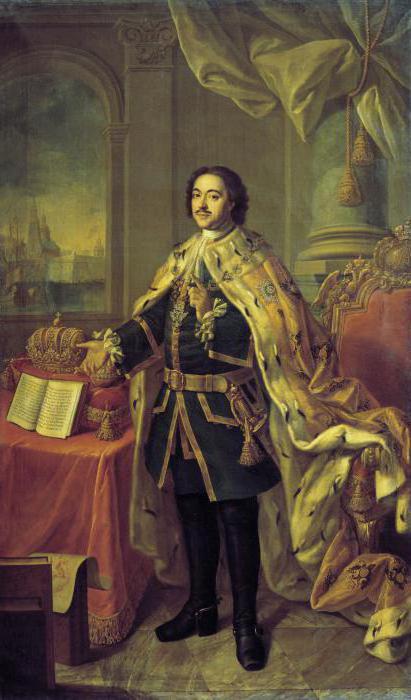The human body is a surprisingly fragile system, but there are people who like to push themselves to their limits.
Thanks to these brave souls, we learned that our body can compensate for hunger or lack of oxygen in order to survive as long as possible.
See also: 7 incredible stories of survival of people who have been on the verge of death
Here are 5 amazing examples of superhuman endurance.
How many people can live without sleep?
In 1965, 17-year-old Randy Gardner set the world record for being awake for 264.4 hours or 11 days and 24 minutes. Gardner participated in an experiment, as a result of which it was necessary to find out what happens to the psyche and body of a person deprived of sleep.
As a result of the experiment, young man symptoms such as mood swings, problems with concentration and memory, paranoia and hallucinations appeared. On the fourth day, he mistook himself for a famous athlete, and the road sign for a person. On day 11, he was asked to consistently subtract 7 from 100, but when he got to 65, he stopped and said that he forgot what he was doing now.
After such a marathon, Gardner slept for almost 15 hours and returned to his previous sleep rhythm within a few days.
Why you shouldn't: Sleep is important for maintaining memory and skills, as well as many other brain functions.
underwater breath holding record
The longest person was able to spend 22 minutes without breathing. The record belongs to Danish freediver Stig Severinsen, who was able to hold his breath underwater for 22 minutes on May 3, 2012.
Severinsen began practicing breath-holding underwater as a child, later honing his skills in underwater rugby and hockey, and then he became a freediver. Stig uses knowledge of biology and medicine, as well as the practice of yoga, to achieve such results.
Why you shouldn't do it: Without oxygen, the human brain will die in about 4 minutes. Before the attempt, the Stig inhaled pure oxygen for 19 minutes and 30 seconds, which satiated his body and helped his brain work while he was underwater. In addition, he was in water with a water temperature of about 30 degrees, which contributed to the preservation of oxygen in the lungs.
How many people can live without food and water?
In 1979, 18-year-old Austrian Andreas Mihavecz was forgotten in a holding cell and found only 18 days later.
Andreas ended up in a cell as he was a passenger in a crashed car, and he was left until the circumstances were clarified. Each of the three policemen who were in charge of him believed that Mikhavech had already been released and ignored the pleas of a worried mother who could not understand what had happened to her son.
During the time spent without water and food, he lost 24 kg of weight. After 18 days, Andreas was discovered by a police officer who had nothing to do with him, after he smelled a stench coming from him. It took the unfortunate man several weeks to recover his health.
Why You Shouldn't: Water is a more important replenishment element than food. The human body is about 60 percent water, which is needed to hydrate the joints, flush out waste products, and regulate body temperature.
Human space record
The world record for the longest stay in space belongs to Russian cosmonaut Valery Polyakov, who spent 437 days and 18 hours aboard the Mir orbital station from January 8, 1994 to March 22, 1995.
During his 437-day stay, he conducted scientific research and experiments, studying how the human body would react in microgravity during long missions, such as a flight to Mars.
The astronaut constantly engaged in physical exercises for several hours to keep himself in shape. For all the time in orbit, Valery Polyakov received 15 roentgens (for comparison, the radiation level in Chernobyl was 20 roentgens). This is about the same dose of radiation as when flying to Mars and back.
Why you shouldn't do this: The human body is designed in such a way that it functions best in the conditions of Earth's gravity. Without it, muscles, including the heart, lose mass and strength.
Human life without sunlight
In 2004, Czech magician Zdenek Zahradka set a world record by spending 10 days in a coffin underground, where he had a breathing tube but no water, food or sunlight.
The magician himself claims that the most difficult thing was to endure intense thirst, and the 7th and 8th days were the most difficult. The doctors who monitored the man's condition said that he had lost 8.5 kg.
In addition, the record for the longest stay without the Sun may belong to a child. In 2012, Russian police discovered a cult of underground dwellers in the Republic of Tatarstan, where many children have never seen the Sun.
Why you shouldn't: Sunlight is an important source of vitamin D, which helps your body absorb calcium for bone health. It also promotes the production of serotonin, which regulates sleep, mood and appetite.
In our article we want to talk about strong people. Yes Yes. It's about them. After all, Russia has not yet been transferred.
How to determine the strongest?
How to determine who is the strongest? Finding such a person is not so easy. After all, you need not to make a mistake and determine the real leader. And for this, various international championships are held.
We have our own competition in the country, which determines who is the strongest person - the championship of Russia. It gathers a lot of spectators and fans. You understand that this spectacle is distinguished by a special emotionality. People come to it from the most remote corners of the country and even from
Elbrus Nigmatullin
In Russia, it is He who occupied this pedestal for quite a long time. The strongman himself comes from Bashkiria. He began to demonstrate his extraordinary strength and capabilities even in childhood. At ten years old, he could calmly pull himself up forty times, which is beyond the power of an ordinary adult man. However, Elbrus is famous throughout Russia not only as the strongest man in the Russian Federation. He is also known as political figure and as an actor. E. Nigmatullin was called the strongest for four years in a row. His track record has accumulated more than one world record. For example, in 2006, a strongman stretched ten meters along the Moscow River, the Ivan Kalita steamboat, whose weight is one hundred and eighty-six tons.
In addition, the strongman is a master of sports in powerlifting and arm wrestling, as well as a national champion in these sports and hexathlon.
But in 2010, Elbrus did not take part in the competition for the title of "The Strongest Man in Russia". His place was taken by Sergey Kharlamov.
Who is on the list of the strongest people in the country?
Rating of the most powerful people in modern Russia
We will start our list from tenth place and gradually reach the leader in first place.
Before moving on to strong men, we want to note by what parameters, in fact, human strength is currently determined. For many athletes and coaches, the most important metric is the deadlift. What it is? This, in fact, is the weight that a strong man is able to lift from the ground. This is the power of an athlete. Therefore, our rating includes only those strongmen whose records were recorded at official competitions, and not at home or in training.
Who are these strong people in Russia?
The strongest and most enduring people in Russia: 
10. Livshits Oleg (375 kilograms). He is the winner of many international and national competitions, the world record holder in the deadlift, and also the winner of the Russian bench press championship.
9. Kalinichenko Vladimir (377.5 kilograms). He is a master of sports in powerlifting, as well as a country record holder in triathlon and a multiple winner in power extreme competitions.
8. Kirill Sarychev (380 kilograms) - an international class athlete (master of sports) in powerlifting, as well as push-ups. He is the absolute world champion in the junior team, the record holder of the Russian Federation and Europe. He set the country's absolute record in the prone position without equipment - three hundred twenty-six kilograms.
7. Serebryakov Alexey (380 kilograms). He is the winner of the Russian Cup in such a sport as powerlifting in 2001, the champion of Russia in the same year. He also became the World Junior Champion in 2000. 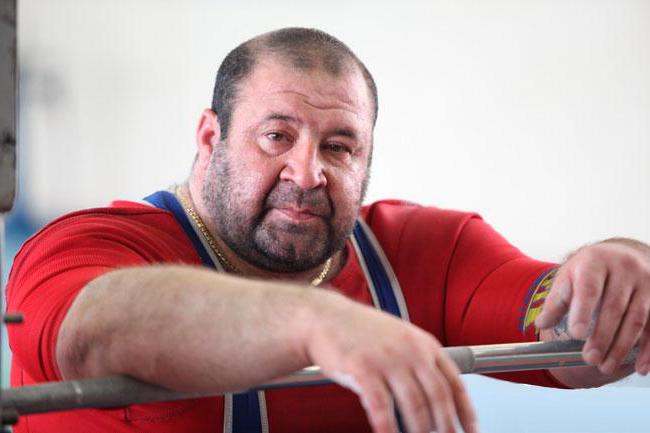
6. Klyushev Alexander (385 kilograms). We can safely say about him that he is one of the strongest people on our planet. This athlete has a large number of records in competitions such as power extreme. He is not only a master of sports in international class powerlifting, but also a European champion in this form. And finally, he has the title of "The Strongest Man in Russia" in power extreme in 2008, 2009 and 2011.
Top five
5. Andrey Belyaev (395 kilograms) - repeated champion of the Russian Federation in powerlifting, world champion according to the WPC.
4. Malanichev Andrey (400 kilograms) - multiple champion of the Russian Federation in powerlifting and master of sports, winner of many international tournaments, winner (five times) of the Titans Cup. 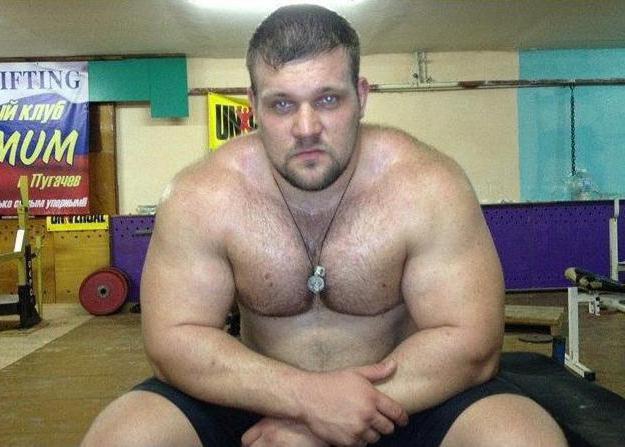
3. Bondarenko Vladimir (400 kilograms) is just a real world-class powerlifting legend. He joined the gold team of the Russian Federation, which has not lost for eight years. Since 2007, unfortunately, he has not competed.
2. Pozdeev Konstantin (400 kilograms). He became the absolute champion of the world, Russia and Europe in deadlift in the weight category up to one hundred and ten kilograms. And also he is the champion of Russia, the world and Europe in powerlifting (IPF version) and the master of sports of international class. 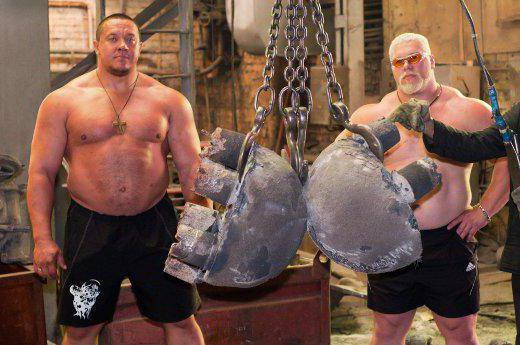
1. And finally, who is the strongest person in Russia? It occupies the first place in the ranking (417.5 kilograms). It is hard to imagine, but this athlete is an eight-time national champion in (weight category - more than 105 kilograms). He set the absolute record of Russia in the deadlift, which amounted to 417.5 kilograms. In addition, he is an international master of sports in weightlifting and powerlifting.
These are the extraordinary most powerful, dexterous and enduring people of Russia.
Historical digression
Our country has always been famous for its strong men. In Russia there was and is a certain cult of physical strength. It has been happening since ancient times. Remember who were the heroes of the first epics and legends? Of course, rich people. There were enough strong men in the history of the country. There is even a list of the most powerful people in the history of Russia. It highlights seven famous people who are worth talking about in more detail.
Tsar Peter the First
The list is headed by Tsar Peter the Great. It is difficult to call him an ordinary king. He stood out among the autocrats primarily in height (204 centimeters). Peter possessed remarkable strength and indefatigable energy. He twisted coins with his fingers, iron pans into a ram's horn. The king, checking the strength of horseshoes, could twist them. If she succumbed, then it means bad.
Evpatiy Kolovrat
Evpaty Kolovrat is a real historical figure, despite the epic image. The hero became famous for his strength and courage in the fight against the Mongols. He had a squad, with which he entered into battles with an enemy that outnumbered him. Evpatiy also defeated the strongest Mongol warrior sent by Batu Khan himself.
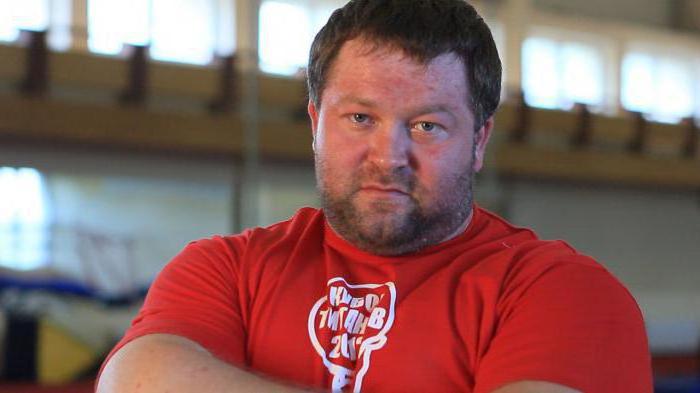 The enemy did not manage to defeat the Kolovrat squad until they thought of using stone-breaking tools in the war. After the death of the hero, Khan Batu ordered to give his body to the squad. He did this as a sign of respect for the bravery of the warrior.
The enemy did not manage to defeat the Kolovrat squad until they thought of using stone-breaking tools in the war. After the death of the hero, Khan Batu ordered to give his body to the squad. He did this as a sign of respect for the bravery of the warrior.
Rusakov Grigory
Rusakov Grigory (the turn of the nineteenth and twentieth centuries) - the winner of bears and bulls. He was born in the Donbass and worked in a mine. Once he became a champion, and he was invited to work in a circus in Moscow. Since then he has become a wrestler. Having won the love of the audience and popularity in the capital, he began to tour Russia and then around the world. He became the winner of the championship in Paris and Argentina. Nicholas II freed the wrestler from military service. However, his career was cut short in 1917, when the revolution took place. According to some sources, he continued to live in Murmansk, and according to others - in the settlement of Mikhailovka. However, the hero died somehow quite ridiculous. The cause was a fall from a truck. Rusakov wanted to break a branch on the move and fell. He became paralyzed and died a year later. He was known for his fights with bears, the ability to bend rails and horseshoes.
Ivan Poddubny
Poddubny Ivan was also a famous wrestler. He began his career in the Beskorovayny circus. He lost his first competition and since then began to train a lot every day, sparing no effort. Very quickly he became famous both in Russia and in Europe. His main opponent was Raoul de Boucher (French).
 They collided in the ring three times, and Ivan Poddubny always emerged victorious, despite the dishonest methods of the Frenchman. The strong man conquered not only Europe, but also America. There he gathered a lot of spectators. However, he did not stay there for a long time and returned to his homeland.
They collided in the ring three times, and Ivan Poddubny always emerged victorious, despite the dishonest methods of the Frenchman. The strong man conquered not only Europe, but also America. There he gathered a lot of spectators. However, he did not stay there for a long time and returned to his homeland.
Alexander Zass
Zass Alexander remained in history as Iron Samson. He became famous during the First World War. He worked in the Hungarian circus and staged numbers himself, in which he demonstrated miracles of strength and endurance. The strong man toured with his performances in France, Italy, England, Switzerland, England. In 1924, Zass permanently moved to England, where he was awarded the title "The Strongest Man on Earth". One of his merits is that he developed a system of special exercises to strengthen the tendons. Thanks to such training, the strong man was able to withstand enormous loads.
Vasily Alekseev
Vasily Alekseev can be called, perhaps, the last strongman of the Soviet era. He lived in a small town near Rostov. With worldwide fame, he led a fairly simple lifestyle, paying close attention only to his favorite weightlifting. Foreign fans called him the Russian Bear.
 Twice he was the champion of the Olympic Games, and the world champion six times, and the same number of European champions. For seven years in a row, he held the championship at the Union Championships. During his sports career, he set eighty world records and eighty-one national records. An interesting fact is that he became the eternal owner of the world record for the sum of three exercises (645 kilograms). He trained with himself, setting new records. He was the first to conquer the mark of 600 kilograms. Until 1992, Alekseev was engaged in coaching in weightlifting. He developed a revolutionary training system, thanks to which none of his wards received a single injury. Alekseev criticized the lifting of large loads in training, suggesting betting on endurance by combining various types of training. The famous coach died in Munich in 2011.
Twice he was the champion of the Olympic Games, and the world champion six times, and the same number of European champions. For seven years in a row, he held the championship at the Union Championships. During his sports career, he set eighty world records and eighty-one national records. An interesting fact is that he became the eternal owner of the world record for the sum of three exercises (645 kilograms). He trained with himself, setting new records. He was the first to conquer the mark of 600 kilograms. Until 1992, Alekseev was engaged in coaching in weightlifting. He developed a revolutionary training system, thanks to which none of his wards received a single injury. Alekseev criticized the lifting of large loads in training, suggesting betting on endurance by combining various types of training. The famous coach died in Munich in 2011.
Alexander Karelin
Karelin Alexander is perhaps the most famous Russian wrestler. They called him San Sanych. He left big sport more than fifteen years ago, back in the year 2000. At the age of fourteen, he became interested in Greco-Roman wrestling. Four years later he became the world champion among youth. During his entire sports career, he collected many titles, took gold medals at the Olympics three times, won the title of world champion nine times and twelve times the European champion. In addition, he won gold medals thirteen times at the championships of the Union and Russia. 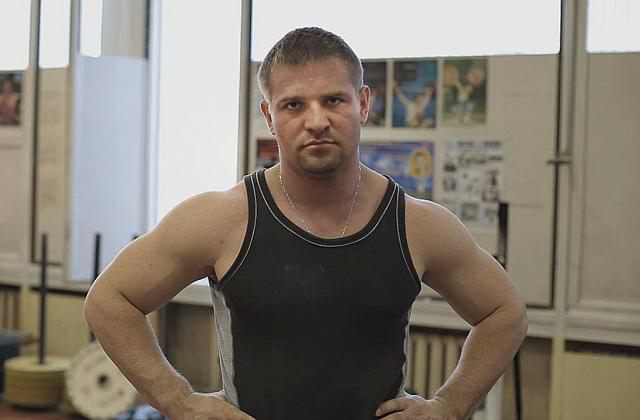
He was even awarded four times as the best wrestler of the planet with the Golden Belt. In the ninety-ninth year, Karelin was invited to fight by a Japanese fighter, who was reputed to be completely invincible in his homeland. And so Akira Maeda decided to make a show by challenging Alexander. However, this was his mistake, because in a few minutes he became just a throwing dummy for the Russian strongman. Although, I must say that Karelin used only techniques from wrestling (Greco-Roman).
Instead of an afterword
And now the contest "The Strongest Man of Russia" is being held. Since the country has always been famous for its strong men, the event is spectacular. Athletes are offered six exercises. All of them are completely different. There are also relay races, which participants pass with heavy loads. And there is such a test as to keep, for example, a Mercedes minibus. It is hard to guess who will become the absolute leader in such competitions.
Speaking about strength records and how the strongest man in Russia lives, you need to understand that such achievements are not easy. They are not subject to everyone. Before reaching such heights, each strongman went through a long path of grueling training. Yes, and having won titles and titles, becoming a champion, none of them stops and continues to train, because there are always many new athletes around who also strive to climb the sports Olympus. For each of them, sport has become the meaning of life.
What does it mean to "develop dexterity"? This is, first of all, the ability to make the necessary motor movement at a certain moment - so quickly as to prevent the commission of any action. In other words, these are the movements that help a person to cope with difficulties of any complexity that have arisen - to cope quickly, clearly enough, and as correctly as possible. And, of course, it is clear that this quality in a person needs to be developed from a very early age.
Agility is it?
So, with the concept of dexterity, we have already decided. This is the force that helps us, with the help of progressive movements, find a way out of the situation that has developed in a certain period of time. Any parent knows that in order for a child to grow up strong and dexterous, you need to develop these qualities from a very young age. Strength, dexterity, endurance are the three determining factors for the successful future of each growing individual.
Also, these qualities are developed in the classroom. physical education first in kindergartens, and then in schools and higher educational institutions. The simplest is sport games, and then - sport sections. It is undeniable that while doing any kind of sport - be it football, basketball, athletics, wrestling, swimming - the development of dexterity and strength in a child will occur without fail.
Starting from an early age
The development of dexterity in children is not as simple as it seems at first glance. It is wrong to think that a child can become dexterous if he is engaged exclusively in sports.
Acrobatic exercises also contribute to the development of dexterity - take, for example, a trampoline beloved by all children. In addition to dexterity, it is well developed on it. Statics also plays a big role, namely the ability to fix the body for a long time in various poses. Good example- yoga classes. In general, it is very important to first interest the child, gradually accustoming him to constant activities. It should be remembered that the stock of motor skills must be periodically enriched, otherwise the ability to learn is sharply reduced. Today there are several types of dexterity.
What is agility?
Agility types are divided into four main types.
- The first is general dexterity. It implies the ability to perform any new motor exercises.
- The second is special dexterity. In other words, it is the ability to coordinate one's movements while in a certain situation. Special agility is divided into two subspecies: acrobatic and jumping. Acrobatic is aimed at the ability to defend during the game, to make throws correctly. Jumping includes acquired skills in which the child is able to control the body without any support. It is very good when you can combine both types of dexterity - it can be outdoor games, height, depth, various balance exercises or just juggling balls.
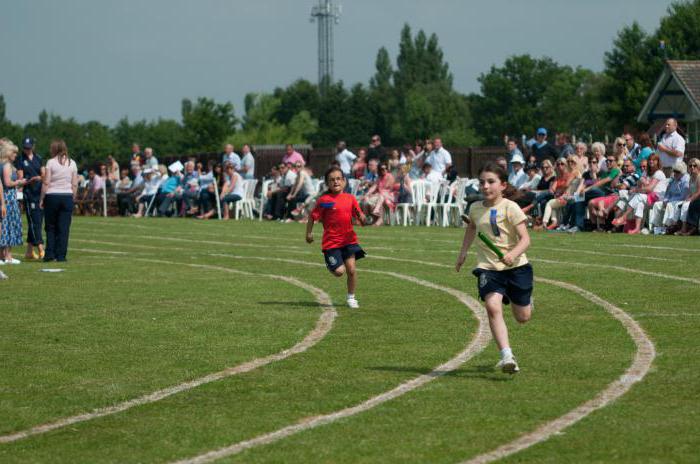
Listening to physiologists
As leading physiologists say (for example, dexterity is motor resourcefulness, gradually developing into mental one. Physiologists also determined how a person should cope with an emerging situation - correctly, quickly, rationally, resourcefully. As Bernstein says, dexterity is directly related to the control function. And this means that leading role This is where the nervous system comes into play. However, the physiologist does not call dexterity an exclusively physical quality, such as strength, speed, or endurance. He is inclined to believe that the physical and psychological aspects of this quality are approximately equal to each other.

Age - not a hindrance?
The natural development of dexterity (its peak) falls on the senior. This period is most favorable for the development of basic physical abilities. Of great importance are systematic exercises using exercises of various complexity.
So, based on all of the above, we can say with confidence that dexterity is a complex psychomotor ability, a kind of indicator of the formation of motor experience. Experts are sure that the more complex the movements and actions, the more perfect the dexterity itself. And how willingly children react when they succeed! There is a direct chain here - effort, result, joy from success, desire to do even better.

sports agility
The agility of athletes is developed through sports games. It can be basketball, handball, football and much more. Based on studies of agility in athletes, its components were identified. This is, first of all, the coordination of consciously performed movements, as well as the speed of assimilation of the acquired skill and the speed of reaction to the signal produced. Agility development is necessary for various reasons. It has already been proven that the more a child masters new types of movements, the better his psychological processes will proceed - thinking, memory, perception.

The presence of such abilities has a beneficial effect on the general condition - the expenditure of physical strength is significantly saved. At the same time, experts focus on the varieties of exercises.
The first are those in which there is an element of surprise and stereotypical movements are completely excluded, the second are exercises aimed at high coordination, and the third are special tasks aimed at sharp changes in direction, tempo, and amplitude. In general, it is important to know that athletic agility is hard work that must be preceded by lighter exercises. Athletics is considered ideal for the initial stage - it is in this sport that all muscle groups are involved, and the load on them is carried out evenly and systematically. As the athletes themselves say, it is after athletics that you can safely go to other sports.
And in conclusion
Agility is the unique human ability to quickly and accurately respond to change. As practice shows, people with this quality, in life situations, can quickly find the right decision, to minimize all the negative sides. You cannot become dexterous in a few months if years of inactivity are behind you. It is impossible to hope for more without making corresponding efforts. You can not load yourself beyond measure, hoping that this will result in a much better result. Patience is needed - gradually move from primary easy exercises to more complex and lengthy ones.
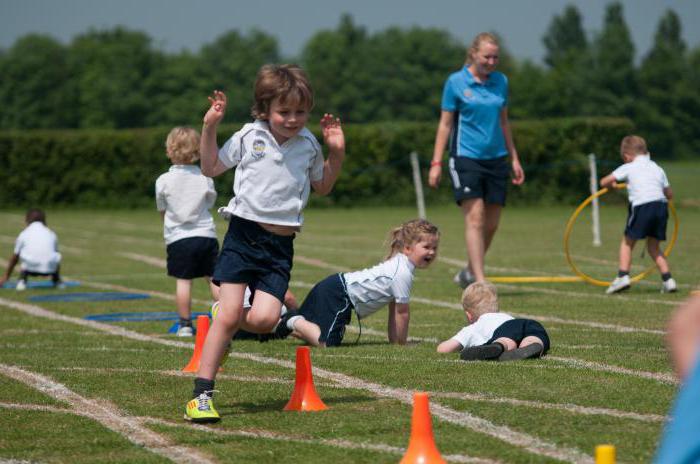
Only systematic work on oneself, both physical and psychological, will help not to stand still, but to move forward, easily accepting new blows of fate and giving them a worthy rebuff. Strength, dexterity and endurance are qualities inherent only in a strong-willed person.
Interesting Facts, interesting information about athletes and other people - this is information about health, strength, endurance, agility. In ancient times and in modern times, there were amazing people whose skills are difficult to repeat and they continue to amaze with their achievements and inspire modern athletes for daily training. Unfortunately, in our time, many victories are based on doping, unsportsmanlike behavior. But still, there are many athletes who achieve success through daily training, perseverance, training not only muscles, but also tempering character.
Strength
Interesting facts about sports in ancient times. Sport and intelligence may seem incompatible concepts, but the ancient Greek scientists - Socrates, Hippocrates, Aristotle, Democritus, Demosthenes were famous athletes and participated in the Olympics, they had considerable strength in addition to the mind. Pythagoras was a champion boxer, and the fisticuffs of antiquity were much more cruel than modern ones - the hands were wrapped in bull skin so as not to injure the hands, and such a fist could cause much more harm to the enemy than an unarmed hand. Plato competed in the discipline of pankration - a mixture of boxing and wrestling, such fights could be as cruel as fisticuffs.

The most productive Soviet freestyle wrestler is Alexander Medved, who became world champion 10 times.
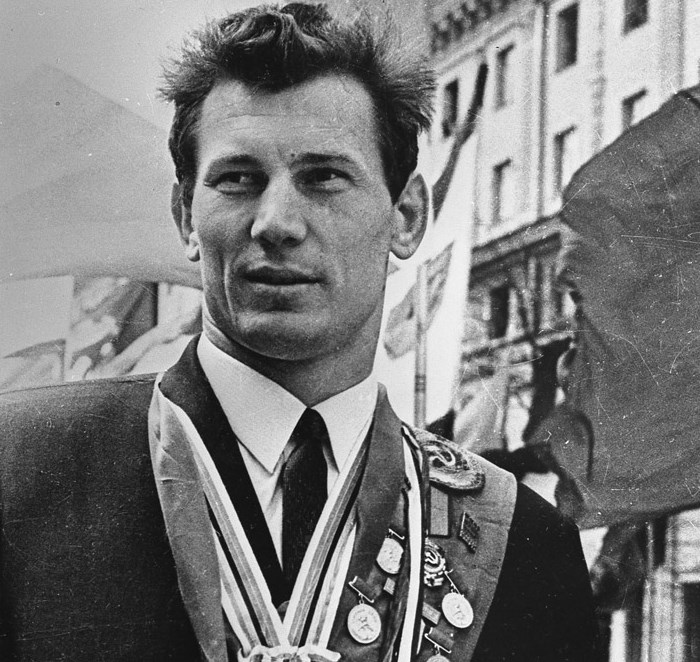
The maximum weight of the bar, pressed from the chest in the prone position, was 486 kilograms. The record was set by weightlifter Ryan Kenelli, during the exercise he could not fully straighten his arms, as required by the rules, but the result was still counted, considering that no one would be able to lift a barbell weighing almost half a ton anyway.
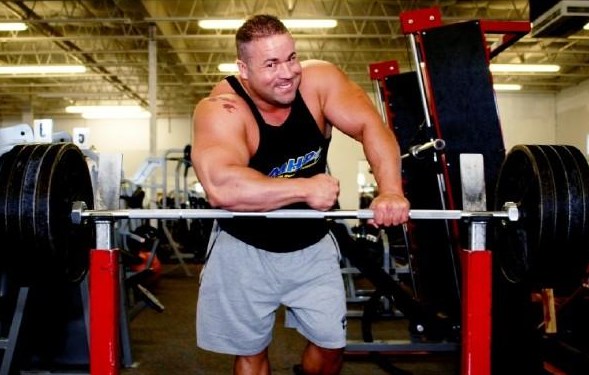
Russian Zalozny Denis is very hardy - in one hour he made 1333 lifts with a coup on the crossbar. This athlete owns another record achievement (it was not officially registered) - 210 squats with a barbell weighing 100 kilograms.
Children often make excellent athletes. A five-year-old boy, Ronak, did 1,482 push-ups in 40 minutes. The child achieved this result by doing push-ups every day from the age of 2.5 years.

Ancient athletes could earn much more than modern ones. Roman sportsman Gaius Apuleius Diocles (2nd century AD) hosted competitions in chariot races. If we recalculate his fees for modern money, then his earnings amounted to $ 15 million.
The heaviest sumo wrestler is the world champion in this sport discipline Emanuel Jabrauch. His height exceeds two meters, weight - over 400 kilograms.

Agility
The tallest basketball player in the world is the Chinese Sun Mingming, he can be a record holder not only among athletes, but also among ordinary people - with a height of 2.36 meters, he has a very small weight - 152 kilograms, which allows him to move freely and achieve noticeable sports success.
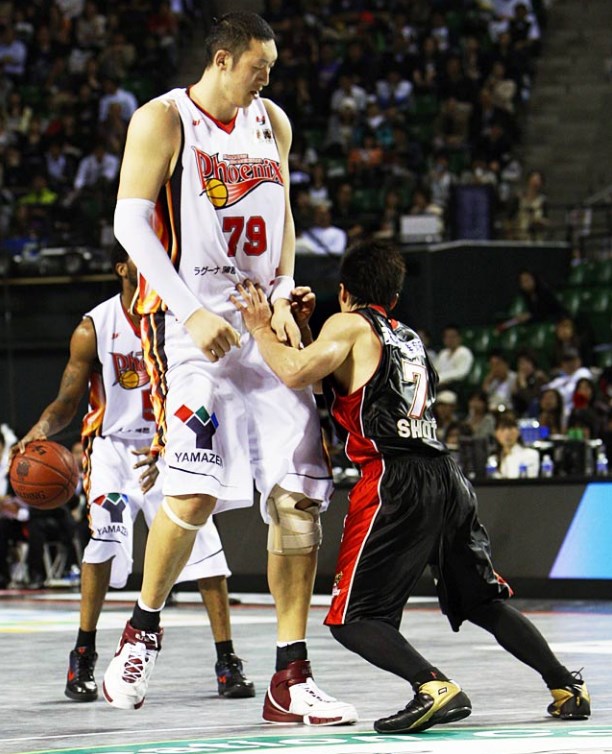
There was an amazing football match in 1976 in which an Aston Villa player scored four goals - two against Leicester City, two against himself. The game ended in a draw, with a score of 2:2, surprising and perhaps even angering the fans.

In 1957, at a baseball game, athlete Richie Ashburn hit the ball so that he smashed the face of a woman who was sitting on the podium. The match was interrupted, a woman with a broken head on a stretcher was taken to the first-aid post. Having bandaged her head, the cheerleader returned to her seat and the same baseball player again hit the same woman with the ball.
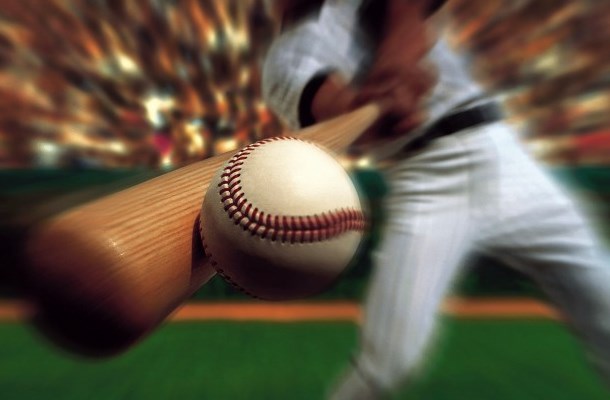
Parachuting has its records - in 1960, the American military Joseph Kittinger jumped from a stratospheric balloon, which rose to a height of more than 31 kilometers, reaching a speed of 1149 kilometers per hour. Before opening the parachute, the athlete flew for more than 13 minutes. During the jump, Kittinger turned off, his life was saved by a parachute, which automatically opened at an altitude of 5.5 kilometers. The jump was made in special equipment, the parachutist looked a bit like an astronaut.
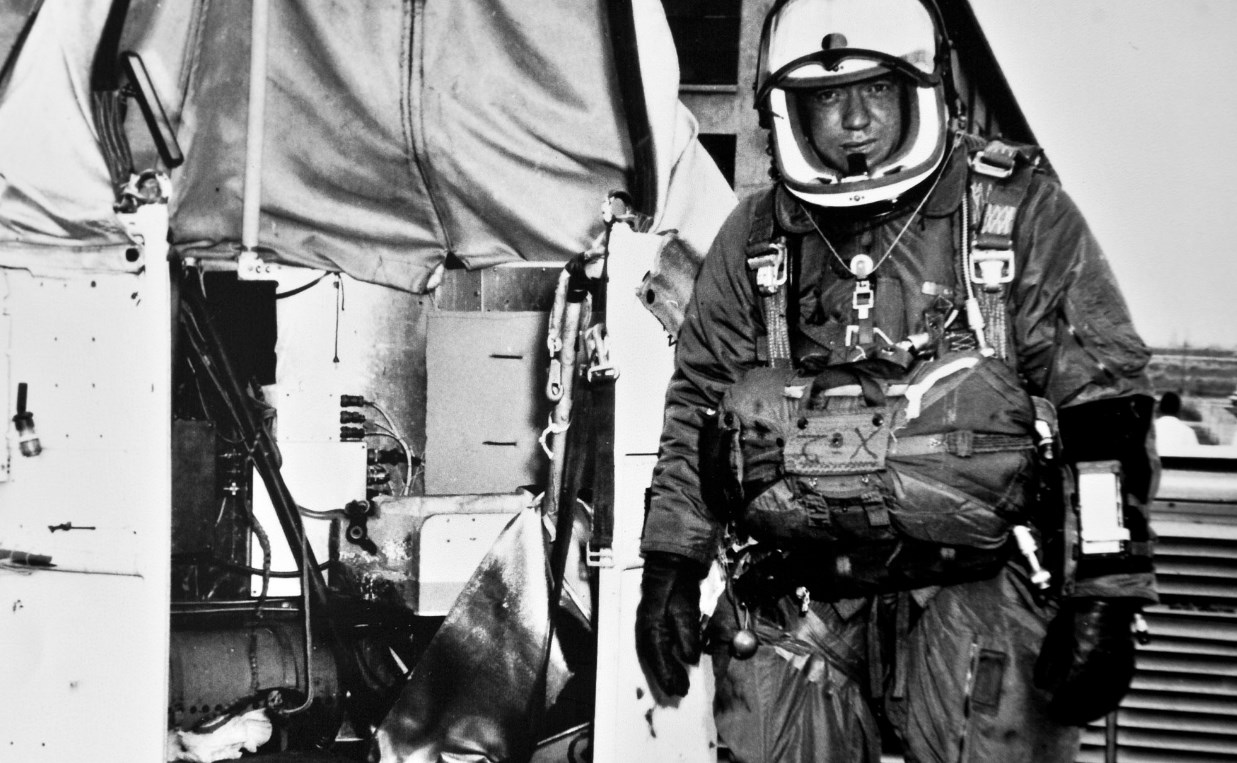
Acrobatics on a bicycle is very dangerous for health. However, cyclists sometimes do tricks so difficult that they are recorded as records. At the age of 24, cyclist Jed Mildon did a triple backflip on his bike at the BMX show. The athlete prepared the trick for three months.
The largest number of water skiers who simultaneously rode one boat - 145, the athletes rode in such a composition for almost two kilometers along the coast of Tasmania, setting a record that was recorded in the Guinness Book of Records.

The highest tennis court is located in Dubai, in a five-star hotel at an altitude of about three hundred meters. It is not equipped on the roof, but is attached to the side of the building and seems to be floating in the air. When no one is playing on the court, helicopters can land on it.

Speed
Interesting information about athletes-athletes. Ethiopian Haile Gebreselissie won the 10 km race. While running, he presses his left hand to the body - this is a consequence of the fact that as a child he ran ten kilometers every day on the way to school, clutching his textbooks.

Jamaican athlete Usain Bolt runs the fastest in the world. In 2009, he set two records - in the 100-meter race he covered the distance in 9.58 seconds, and in the 200-meter race he finished in 19.19 seconds.

The longest skateboard jump was made in 2004 by Danny Wayne at the Los Angeles Skateboarding Contest. Having left the high ramp, Danny reached a speed of 88 kilometers per hour, flying 24 meters on the subsequent jump. The following year, the athlete turned his jump into a real show by flying over the Great Wall of China on a skateboard.
Racer and test driver Mauro Kahlo set the record for the longest drift (controlled skid) in a Mercedes car - he skidded to 2308 meters, after which further movement was impossible due to tire damage.
Base jumping is considered the most dangerous sport - skydiving at low altitudes, in which the body can rotate uncontrollably, and the parachute may not open in time.
Motorsport is also a sport. Electric cars are very popular these days. The fastest electric car was created by students from the American Brigham Young University (Whittingham, Vermont, USA). More than a hundred people worked on the project for seven years. The maximum speed exceeds 280 kilometers per hour, and at a slightly lower speed, 250 kilometers per hour, the car can drive for quite a long time. The body of the car is lightweight, made of carbon fiber, the batteries are lithium-phosphate. This is not just an experimental car, it is a real racing car, at least among electric cars.

If you have more interesting facts about athletes, share them in the comments.
Chapter IX. Physical training
Physical training is an integral part of the training process of fencers at any stage of sports improvement. In each period of the annual cycle, its most important tasks are solved, aimed at the versatile physical development of fencers and creating prerequisites for improving techniques and actions.
Each level of development of the physical qualities of a person corresponds to certain opportunities for mastering motor skills. With a change in the level of development of motor qualities, the ability of an athlete to master technique will also change. The improvement of technique, in turn, contributes to the most complete and effective manifestation of the fencer's physical abilities, since his motor abilities are manifested through physical qualities and their combinations: strength, speed, endurance, dexterity, flexibility, voluntary muscle relaxation.
Physical training includes general and special training, which provide both the all-round development of an athlete and the manifestation of specialized qualities necessary for a fencer.
General physical training is aimed at raising the functional capabilities of the body, its comprehensive development and the acquisition of a variety of motor skills. To solve these problems, the whole set of means of physical education is used. However, according to the nature of the requirements for various physical abilities and features of motor skills, basketball, football, tennis, hockey, boxing, and acrobatics are on a par with fencing. This means that we can recommend coaches and athletes to use exercises from these sports with the greatest efficiency.
Special physical training is aimed at the development and specialization of manifestations of physical qualities to improve fencing techniques and actions. The means of special physical training of a fencer are the techniques and actions used by athletes in fencing combat.
The interdependence and mutual influence of exercises aimed at improving various motor qualities should be taken into account. Exercises that promote the development of various physical qualities can either complement each other, or, conversely, worsen the development of any quality. Therefore, physical training must be built in such a way as to use the positive interactions of various motor skills and qualities and eliminate the negative impact on the specialization of their manifestations. It is also necessary to take into account the selective influence of exercises on the development of individual qualities. However, the greatest development of one quality is possible only with a simultaneous increase in the level of development of others.
To participate in competitions, a fencer must have a high level of physical fitness. During 3-4 days of competition, a fighter endures very heavy loads, holds 20 or more fights a day, being in an atmosphere of constant competitive tension for 8-12 hours daily.
To deliver one injection, the athlete sometimes has to perform more than 10-15 preparatory actions. In the course of only one duel, a fencer often performs up to 30-40 lunges and returns from a lunge with the maximum application of speed-strength efforts - within at least 120-160 kg. Combat also requires maintaining a combat stance when maneuvering with steps and jumps, performing extremely fast attacks with a step forward and a lunge, an "arrow". But the fencer operates in conditions complicated by protective clothing and a mask, which impede breathing and heat transfer, and adversely affect the accuracy of perceptions.
The healthier an athlete is, the higher the body’s working capacity, the better he perceives training loads and quickly achieves high level development of motor qualities. Physical preparedness creates the basis for the improvement of sports technique, which should be considered as a form of manifestation of the fencer's motor abilities, as well as conditions for mental stability, manifestation of volitional qualities.
In each sport, and fencing in particular, the "set" of required physical qualities should express the specifics of the motor properties characteristic of the type of sports activity. Improving the physical fitness of fencers should have the main goal of combining and in-depth development of specific qualities. The maximum disclosure of the athlete's individual abilities, the development of his best qualities leads to the achievement of sportsmanship.
Rapidity. The success of a swordsman in battle largely depends on the speed and surprise of actions, the ability to change the speed of movement. It is known that speed has a number of forms of manifestation (latent time, speed of a single movement, pace, etc.), independent of each other.
Fencer speed education is aimed at developing the speed of combat movements and the speed of motor response to changing situations. To solve the first problem, techniques and actions are used that are performed at the maximum or near-limit speed. The development of the speed of a motor reaction to a sudden change in the situation is carried out by special exercises with and without weapons, as well as the use of sports games (basketball, handball, football, etc.). In addition, sports games effective remedy development of speed in long-term work of variable intensity, which is extremely important for fencing.
can be used to speed up the reaction. pedagogical tasks, aimed at accelerating both the holistic performance of the action and its components, as well as reducing the latent reaction period. At the same time, it should be borne in mind that the stabilization of the belt indicators of the movement being performed indicates the need to change the conditions for its implementation.
When developing responsiveness, it is necessary to take into account the type of fencing that athletes are engaged in and apply specific signals. So, for fencers on rapiers and swords, the most typical stimuli will be tactile and visual signals. For saber fencing, visual stimuli are more characteristic. Of course, a variety of signals should be used, including those not typical for fencing activities, but specific stimuli should be leading.
It is very important to vary the strength of the signal itself. In this case, the strength of the stimulus can be determined not only by its absolute value, but also by the relative speed or duration of the signal.
In the process of developing the speed of motor reactions, the fencer's ability to accurately distinguish, differentiate microintervals of time is improved. When using a device that measures the time of specific reactions, the reception or action is first performed at maximum speed. Then the trainee is informed of the time shown to them. Further, the reception is also performed at the highest speed, however, the fencer must himself estimate the execution time, after which the true time is reported to him for comparison. Constant comparison of subjective sensations of time with objective indicators develops the ability to distinguish the slightest temporal characteristics, thereby increasing the speed of response. At the next stage of improving the speed of reaction, athletes are given the time to complete the reception. This creates the prerequisites for the development of the fencer's ability to control the speed of his actions.
To improve the speed of movements, it is advisable to use the means used in athletics to train sprinters, taking into account the specifics of fencing. The following exercises are recommended:
jerks (starts) for 10-20 m from different starting positions (combat stance, low and high start, prone, sitting, back to the direction of movement, etc.);
alternation of slow running with jerks for 15-20 m;
high-speed movements of the hands, accompanied by squeezing and unclenching the fingers (waving, shock movements);
high-speed movements of the legs (feet, shins), imitation of running in place, etc.;
competitions for the fastest overcoming of small distances (30-60 m) by running, steps forward and backward, jumps forward and backward, lunges, jumps on one and two legs, etc .;
jerks with reaching or intercepting objects flying at different speeds and at different height performed from different starting positions (low, high start, combat stance, etc.).
The speed of movements and the speed of reaction can only be increased by an appropriate effort of will, for which it is necessary to use special tasks, for example:
the introduction of an element of competition into the classes (if the students are not equal in strength, a handicap is applied);
the use of signals that dictate the pace of movement or response, including the use of an electric target, a metronome, etc.;
the use of inertia of movement when performing an attack with an "arrow" after a preliminary jump, step and lunge, etc .;
performing movement on an inclined path;
the inclusion of an additional task, forcing to speed up actions, in particular, after the answer, before taking the subsequent defense, make a remission.
To improve speed, it is necessary to repeat the exercises at maximum speed. But repeated performance of the same action leads to undesirable stabilization or decrease in the achieved level of speed. The exercise should be stopped, preventing the appearance of fatigue and a decrease in the speed of movement or an increase in the time of a motor reaction.
Strength. The education of all physical qualities is closely related to the development of strength. So, strength exercises contribute to the growth of speed only under the condition of manifestations of strength in the same movement in which it is necessary to achieve an increase in speed.
For a specialized display of strength, fencers need to:
develop strength qualities that facilitate the mastery of fencing techniques and actions;
acquire and improve the ability to implement dynamic and static efforts in a combat stance and speed-strength efforts when moving and controlling weapons;
develop the ability to rationally exercise power in a variety of conditions.
Means of strength training can be selective or general impact. For selective impact, exercises with weights are used. The general impact with the involvement of the main muscle groups in the activity is usually carried out using the weight of one's own body. Strength exercises are static or dynamic.
In order for the posture of the combat stance (as the most convenient for combat) to become familiar, weight exercises should be used that develop the strength of the muscles of the legs, back, chest and abdominals, as well as the muscles of the hand and forearm. However, in the training of a fencer, speed-strength exercises of a dynamic nature should prevail, in which the manifestation of strength is achieved by increasing the speed of movement.
Fencers should be cautioned against overindulgence in exercises with shock absorbers. The fencer's movements in combat are characterized by an inverse ratio of effort and speed than in exercises with shock absorbers, so their abuse can adversely affect the development of speed.
Means of general influence aimed at developing strength:
jumps in a squat or combat stance, lunge;
squats on one or two legs;
jumps on one or two legs in place and in motion, with a change of direction, in groupings of various types;
long jump from a place, after a short run-up, triple jumps, high jumps;
"arrow" movements (3-5 attempts in one direction and with a change of direction);
rotations, circles, swings with a gymnastic stick, maces, weapons;
games with the task of pushing a partner, pulling an object (stuffed or small ball).
To develop strength, repeated and progressive options for performing exercises and their combinations are used. An increase in load is achieved by increasing weights, speed of movements, and the number of repetitions.
The weight of the fencing weapon does not present any particular difficulties in controlling it, however, in order to quickly perform actions (especially attacks), the fencer must have good speed-strength qualities, which are improved in dynamic exercises with light weights, but with maximum speed and full amplitude. With a limited range of movements, antagonist muscles are activated, which negatively affects the speed structure of movements.
To determine the level of development of the speed-strength qualities of fencers, the following control exercises can be recommended:
running 60 m for a time with three turns (segments of 15 m);
running 30 m for a time from a high start;
long jump with two legs from a place;
long jump from a three-meter run;
standing high jump.
The following exercises can be used to develop strength and control the level of special speed-strength fitness:
attack with an "arrow" (taking into account the length of the jump along the back standing leg) from a combat stance;
jump back (the length of the jump along the front leg is taken into account) from the combat stance;
jump back (the length of the jump along the front leg is taken into account);
a simple attack (lunge) on a visual stimulus * ;
a simple attack (lunge) on a tactile stimulus;
attack with a choice from an average distance to a visual stimulus;
an attack with a choice from a medium distance to a tactile stimulus;
long-range attack with a choice and switch.
* (In this and subsequent exercises performed with the use of reflexometers, the time of the motor component, latent time, and the accuracy of hitting the target are taken into account.)
Agility. The ability of swordsmen for technical and tactical improvisation in battles with various opponents testifies to the level of dexterity. Fencer's dexterity education is the improvement of the ability to quickly reorganize motor activity in accordance with the constantly changing combat situation.
For the development of dexterity, it is necessary to enrich those involved with new and diverse skills and abilities, to include in the exercises elements associated with certain coordination difficulties. Fights, especially with unfamiliar opponents, strings, "silent lessons" are the means for developing dexterity in the first place. A good effect is the use of sports and outdoor games, acrobatic jumps, juggling exercises, for example:
competition games in which you need to maintain balance and simultaneously perform specified movements or fight with the enemy;
combined relay races, including running, jumping, climbing, crawling, moving objects (passing the ball with two sticks, on a racket, etc.);
acrobatic jumps (somersaults, rolls, flips) in various factions and directions;
juggling objects with one and two hands.
Specialized means of developing dexterity can be:
the use of unusual starting positions to perform an "arrow", lunge, thrust, strike, etc .;
performing techniques and actions in the left-sided (if the fencer is right-handed) and right-sided (if the fencer is left-handed) "combat stance;
changing the pace and rhythm of movements when performing movements, fighting at a slow pace, etc.;
change in the spatial boundaries of martial arts (performing techniques on a reduced area, fighting on a shortened track, etc.);
changing the technique of performing techniques and actions (performing movements smoothly and abruptly, a variety of ways to attack with an "arrow", lunge, etc.);
complicating exercises with additional movements (springy squats at the end of a lunge and before returning from a lunge back, repeated injections or blows between attack and defense, etc.);
performing fencing techniques without prior training;
a change in the usual form of martial arts (a three-man fight in a triangle, a fight of two against three, etc.);
performing techniques and actions against the background of distraction (conversation, conversation, answers to the coach's questions, solving the simplest problems, etc.).
Any exercises can contribute to the development of dexterity, as long as their implementation is associated with certain coordination difficulties. As a skill becomes more automated, the impact of the exercise on agility development decreases. Further improvement of fencing means is possible in new, previously unknown combinations.
Dexterity, like other motor qualities, has various forms of manifestation, but it is most important to improve it with specialized means (weapon control, movement across the battlefield, etc.). In this case, one should take into account the variety of combinations of movements of the armed arm and legs, maximum efforts (to achieve high speed) in various phases of the execution of techniques and actions.
For the successful application of actions in fencing combat, it is necessary that dexterity be combined with a specialized manifestation of strength, speed, endurance, flexibility, and the ability to relax.
Flexibility. Mobility in the joints, the range of motion must allow the fencer to the best way show strength, speed, endurance, agility.
Means for the development and maintenance of flexibility are gymnastic movements for stretching, affecting individual groups of muscles, ligaments, contributing to an increase in the range of motion.
Exercises aimed at developing flexibility must be combined with strength exercises (where an increase in the range of motion is associated with significant effort), including exercises with weights. Exercises that specialize in the manifestation of flexibility are also advisable (for example, springy squats, swaying in a lunge; lunges of maximum length from a low gray to one side and the other; intense rotations with straightened arms, as well as bending and straightening the arms forward, to the sides, up; exercises with weapons with maximum amplitude.
It is advisable to perform stretching exercises daily in series. One lesson includes several series. In the course of classes, the amplitude is brought to the limit (without pain). Movements stop as soon as their amplitude decreases due to fatigue.
Endurance. The tension of competitions and training sessions requires the fencer to improve his endurance, as during competitive fights the athlete performs a large amount of high-intensity work. Each fight, carried out with considerable tension, is replaced by rest, in which mental stress does not always have time to return to normal, and sometimes even increases under the influence of the expectation of a fight with a strong opponent. If the breaks between fights are prolonged, but nervous tension is replaced by a decline. There is a need to bring the body into a state of combat readiness with a new special warm-up, which takes considerable strength.
The endurance of a fencer is characterized by the ability for long-term intermittent-speed work with high coordination and accuracy of movements against the background of great mental stress.
The specific performance of a fencer must develop in unity with general endurance. An excellent means of improving endurance are sports games, especially football, basketball and hockey. A positive emotional background, the need to solve a variety of tactical tasks, longer than in a fencing fight, working moments contribute to the development of endurance.
To develop the general endurance of a fencer, running, swimming, rowing, skiing, and skating are also used. However, these exercises must be given a special character, alternating a decrease in the speed of execution with sudden accelerations.
However, in training, the fencer must pay sufficient attention to specific exercises in maneuvering and handling weapons. When developing endurance with tasks for maneuvering while maintaining a combat stance, training should be regulated by determining its duration or the volume of movements performed.
To develop endurance in long-term control of weapons with high accuracy, it is recommended to perform a series of injections (strike) on dummies and targets for a while and at a certain speed from a combat stance, lunge, in combination with movements. Competitions can also be held between partners for the duration of the exercises, the number of attempts, etc.
The most important and most voluminous means of developing endurance are fights. It should be borne in mind that the most responsible final fights are held at the end of the competition, when the fencer is significantly tired. But it is these fights that require the athlete maximum level manifestations of technical and tactical skill. Therefore, in the training process, one should periodically improve techniques and actions against the background of fatigue. Such trainings, developing special endurance, improve volitional qualities, adaptation of the body to the conditions of competitive activity.
It is possible to recommend conducting training fights with the following tasks: fights without a break with 3-5 swordsmen; fights for 7, 9, 11, 13, 15 injections (strikes); 3-5 fights with various fencers for 11-15 injections (strikes); with a shortened battle time; no rest between fights; fights with an advantage of one injection (hit) with the goal of winning in the remaining 1-2 minutes; training competitions in a circular system in several stages, etc.
Performing exercises for the development of special endurance should take place at a certain speed. Increasing the load can go by increasing its duration, the number of repetitions or the intensity of movements. To develop endurance, the intensity of work should increase without reducing the volume, but the volume and intensity should be increased, observing the principle of gradual physical activity.
Systematic endurance training helps to improve the efficiency of the fencer. And this provides good conditions for the manifestation of other motor properties, the efficiency of muscle activity, a greater ability to mobilize all the functions and resources of the body, resistance to the distracting factors of competition, and a better mental state.
Voluntary muscle relaxation. Competitive activity of fencers requires the ability to control the level of muscle tension. The strongest athletes are distinguished by the ability to include in the work mainly the muscles that ensure the execution of the reception, to optimally dose the degree of effort, to arbitrarily relax non-working muscles.
Fast and accurate blade movements are possible only if there is a correct alternation of muscle tension with relaxation. It is especially important that the tone of the muscles of the shoulder does not prevail over the tone of the muscles of the forearm and hand.
In the training of fencers, sufficient attention should be paid to the improvement of voluntary muscle relaxation. It must be remembered that the latent time of relaxation is greater than the latent time of muscle contraction. Under certain conditions, an insufficiently developed ability to voluntarily relax the muscles can lead to a phenomenon called speed tension and depends in part on the initial state of muscle tone (the so-called tonic tension). Tonic tension is also associated with coordination tension, which is observed in beginners when teaching technique. The way to get rid of excessive tension that hinders the manifestation of speed and accuracy lies through the development of voluntary muscle relaxation.
To master voluntary muscle relaxation, fencers need to:
develop the ability to clearly distinguish sensations that indicate muscle relaxation by using exercises with various options transition from tension to relaxation (reduce muscle tension until the “fall” of the relaxed part of the body under the influence of its own gravity; move from tension to relaxation slowly, achieving the maximum number of “steps” of the transition; move from tension to relaxation contrastingly, quickly; sequentially relax various muscle groups);
to improve the ability to relax various muscle groups as much as possible by performing exercises in passive swinging of relaxed parts of the body;
develop the ability to relax some muscle groups and at the same time strain others, independently determine the moment of maximum relaxation of the working muscles.
Exercises to improve the ability to voluntarily relax muscles should develop the ability to regulate the state of the muscles both during work and during rest, change the degree of their tension and relaxation.
Methods of application of means of physical training. In the process of sports training, all sections of physical training are so closely interconnected that in many cases it is almost impossible to make a clear distinction, for example, between an exercise that develops strength and an exercise that develops speed.
The choice of means of physical training depends on the specifics of the type of fencing, the period of training, the individual characteristics of the fencer.
A training session on general physical preparation should be built according to a certain scheme. After a warm-up with the inclusion of flexibility exercises, exercises are performed that develop speed (their number and intensity can be significant), then strength or agility.
Exercises for speed and agility require a high intensity of muscle contractions and high mobility of the processes of excitation and inhibition. Therefore, maintaining the necessary coordination of movements during high-speed work and complex tasks that require dexterity can be achieved only in the absence of significant fatigue, i.e. at the beginning of the main part of the lesson. Endurance work is advisable in the second half of classes, because by this time the respiratory and circulatory organs begin to function most fully. In addition, endurance exercises are performed with a lower intensity of muscle contractions, which allows you to maintain coordination of movements even with some fatigue.
Along with means of a general nature (crosses, sports games, etc.), exercises of selective, local influence should also be used. It is especially important to take into account the compliance of the exercise with the specifics of fencing.
In the training of adult athletes, it is advisable to direct the main volumes of physical training means to the development of the qualities most inherent in fencing - speed, agility, endurance. However, in working with young fencers, in order to accelerate their technical growth, means aimed at developing flexibility and dexterity should prevail over means developing speed, strength and endurance.
In the annual cycle of the training process, the pedagogical tasks of using physical training means are largely subordinated to solving the problems of acquiring and maintaining fitness. Therefore, in the preparatory period, the level of general endurance is initially restored (rises), and then strength, speed, dexterity, and flexibility. In the second part of the preparatory period, emphasis is placed on the development of speed and dexterity, and the share of specialized means increases sharply.
In the main period, in order to maintain the achieved level of physical fitness, in addition to specialized means, sports games that impose versatile requirements on the qualities and skills of fencers are the most appropriate.
In the transitional period, the tasks of eliminating existing shortcomings in the development of individual qualities are combined with a focus on increasing physical development, especially through exercises for strength, flexibility and dexterity. The versatility of the physical development of fencers is a necessary prerequisite for achieving high and stable sports results.

